Like almost every other profession, real estate agents have tremendous amounts of opportunities at their fingertips. Whether you just entered the profession or have been an agent for decades, I’m sure you have seen this yourself. The natural autonomy of the profession leads to substantial financial opportunities. Ergo: you don’t have a boss and you can go to do whatever you want every day.
Pretty great, right? Maybe—it all depends on whether you have a machine to help attract, nurture, and close deals, repeatedly.
The flip side to being a real estate agent, as you can probably attest, is longevity and work-life balance.
Simply put, being a real estate agent can be extremely rewarding, but also, challenging. From constantly generating a pipeline of leads to always being on-call to respond to a client, it can sometimes feel like our work is taking over our lives.
Sure, there is this debate about whether we should really be striving for work-life balance. Wherever you fall on that spectrum, however, it’s clear that there are steps you can take right now to free up your time and best serve your clients. You can also use these steps to find new prospects and grow your business.
Considering this, let’s take a deep dive into tools that you can use to both help you reach your business goals and win some valuable free time back.
Table of Contents
How Technology Can Help You Overcome These Stressors
Record Introductory Videos of Yourself
Creating Your Introductory Video
Direct Messaging and “Replying with Video”
Capture Video Testimonials From Clients
Sharing Your Video Testimonials
Create Videos Highlighting Your Properties
Play Your Videos in Zoom Calls
A Solution: Videos in Your Video
The Problem
Simply put, real estate agents are stressed for a variety of reasons. Even if you aren’t feeling the pressure right now, I’m sure that you have felt some of these things throughout your career.
For starters, there is the high-pressure sales environment. Real estate agents work on commission, which obviously means they must close deals to earn a living. This can lead to high levels of stress—especially if the market is competitive or sales are slow. I don’t need to tell you about the Great Financial Crisis. With the real estate market essentially freezing up, it was extremely difficult for real estate agents to generate sales and make a living. Putting aside large macroeconomic shocks, the day-to-day sales environment can be full of pressure.
From there, the real estate industry can offer an unpredictable schedule. This is one of the more obvious stressors. Real estate agents like you need to be available to attend meetings and show properties—essentially at a moment’s notice. Sometimes, it can feel like your schedule isn’t really yours. That leads to stress and burnout, even if you truly love what you do.
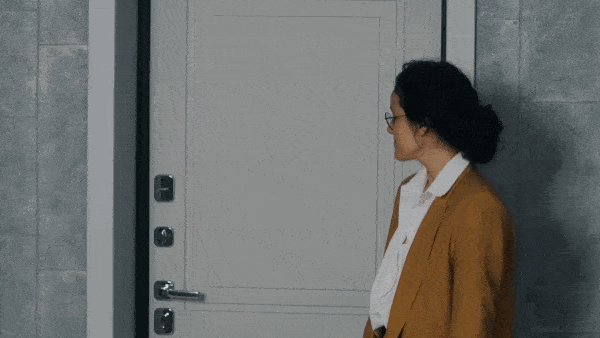
Next, as with many other services businesses, real estate agents like you sometimes have to deal with difficult clients. Scheduling meetings can be one thing. From there, your clients may not necessarily know what they are looking for. And even when you do find a property that your client may like, you may be a party to difficult negotiations. While this difficulty may be fine with one client, it can be difficult if many clients are adding this type of stress.
Finally, real estate transactions require lots of back-and-forth communication. It can be difficult to find open times on all parties’ calendars. It is a small thing, but if you are handling multiple transactions with many different parties, this can get complicated quickly. It adds to some of the overall stress that you may be feeling. On some of the tougher days, it can be the one thing that makes a stressful day even more stressful.
How Technology Can Help You Overcome These Stressors
To be clear, every job and career has stressors. The real estate industry isn’t unique in that there are certain challenges that can make life difficult.
The great news? These stressors can be contained and handled. You can do so by leveraging technology and certain video sales and marketing strategies.
Granted, these aren’t the only tactics and strategies that you can use to mitigate stress. At the same time, I’m a huge fan of the strategies below because they leverage the power of video. Video is effective for so many reasons—one of which is that it can save you immense amounts of time. As you will see below, this time-saving nature of video can be hugely beneficial to help you mitigate stress and get some more free time.
Let’s jump into it.
Record Introductory Videos of Yourself
This is one of my favorite strategies to help you save time and grow your business at the same time. The idea here is that you want to record a quick video of yourself and share it with virtually any type of audience.
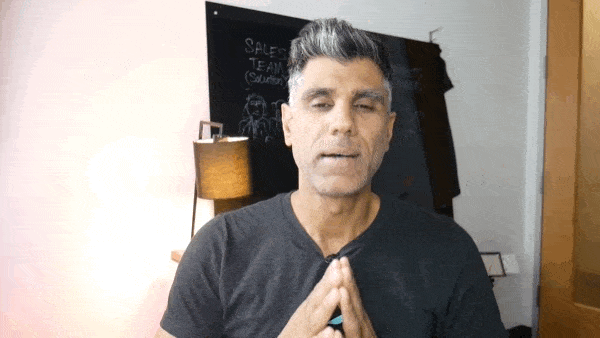
The benefit here is clear.
By creating an introductory video, you don’t have to constantly explain who you are, where you work, and the value that you can provide. Rather, once you meet a new prospect or lead, you can send them your video. Once they have watched the video, they can get in touch with you to learn more about you, your business, and how you can add value.
Essentially, what you are doing here is cloning yourself. Even when you are sleeping, serving other clients, or are at a baseball game with your kids, your introductory video is hard at work for you. Your video is a perpetual advocate that can humanize you and help you get that much closer to a sale.
Creating Your Introductory Video
With that said, let’s talk about how you can create your introductory video.
Haven’t created a video before?
It’s no problem.
There are so many easy-to-use tools that can help you get started right away. Even better, you aren’t going to need to spend thousands of dollars on equipment to get started. In all likelihood, you already have the tools that you need. To get started, you’ll simply need your smartphone and some software to share your video. That is it, which should give you the confidence you need to get started.
From there, all you need to do is take out your smartphone, put it in selfie mode, and start recording your video. That is all you need to get started, and in all likelihood, starting in this simple way will help you make the most effective video possible.

Now, that naturally leads to the question of what you should include in this introductory video.
The awesome thing about creating video content is that there are few hard and fast rules. You can really do whatever you’d like here.
That being said, I’d recommend several things:
- Speak directly to the camera: When you are creating an introductory video, you don’t need to shoot using different camera angles. You don’t need to hire actors and include multiple people. Instead, place your phone on a stationary surface, face the camera, and begin speaking. Simpler is better here. If you don’t have a tripod, you can simply hold your phone and begin talking.
- Keep it short: Because this is an introductory video, think about recording a shorter video than a longer video. You don’t need to explain everything about your work and services here. Instead, introduce yourself, share some information about the services you provide, and make sure to direct your audience to take a step forward (more on this below).
- Include a call to action: As you likely know, a call to action is a tool to help you advance a prospect relationship. In your introductory video, you want to ensure that your viewer can get in touch with you. For instance, think about including a button below your video which lets your viewer directly book a call on your calendar.
- Be yourself: The best types of introductory videos are those where you are down-to-earth and authentic. There’s no need to put up a front or act “professional” for your video to be effective. Being yourself and genuinely speaking to the camera will help you build the relationship and get that much closer to a sale.
Really, the best thing to do here is to simply get started. Pull out your smartphone, put it on selfie mode, and start recording a video.
You don’t need to use your first recording (or your first several recordings). Practice makes perfect here, so don’t hesitate to start recording your introductory video. While it may take some time to record the introductory video that you want, you are making an investment here which will save you significant time in the long run.
Direct Messaging and “Replying with Video”
Now, I want to speak about a simple tactic that can save you and your prospects lots of time. Here, I’m speaking about direct messaging with video.
I’m probably not the first person to tell you why video is so powerful. Some of the many reasons include:
-
- Video helps you build a genuine connection with your audience. It does so in a way that is difficult to replicate with text.
- Video is a fantastic tool for storytelling. No matter where you are, you can tell compelling stories that can truly resonate with your audience.
- Video can help you increase your conversion rate. By engaging with your audience through video, you can strengthen relationships and generate more sales.
With all of that said, there is another key feature of video.
As you can guess, it can save you tremendous amounts of time. Specifically, it can save you immense time when you are communicating with your prospects and clients.
The power comes from asynchronous video. Sure, you can have as many Zoom meetings as you’d like (we are going to talk more about Zoom meetings below).
That said, asynchronous videos give you the flexibility to communicate with anyone. You can record a video, send it to your desired audience, and have them watch the video on their own time.
It gets better. Asynchronous video gives you all of the benefits that I talked about above. You get to build a closer relationship with your audience and get that much closer to a conversion.
How You Can Do This
Considering all of this, you may be wondering how you can use asynchronous video to save yourself time. While recording introductory videos are definitely a good start, I believe you can go one step further here.
What you can do is sign up for a video sales and marketing platform that lets you directly send videos to your audience members. Your audience members can be everyone from your current clients to a prospect that you just met at a conference.
Whoever it is, what you can do is create a personal video for them. Again, the content of this video will depend on your objectives. It can be everything from letting a certain prospect know about a specific property to checking up on a recent client. Then, you will record the video and send it directly to that audience member.
Now, you are at a critical step. Once the video lands in their inbox (or cell phone), you’ll want them to visit a video landing page. On that landing page, you should include a button underneath the video.
That button should let your viewer reply with a video of their own. Basically, it should let the viewer click on that button, have their webcam open, and let them begin speaking to the camera.
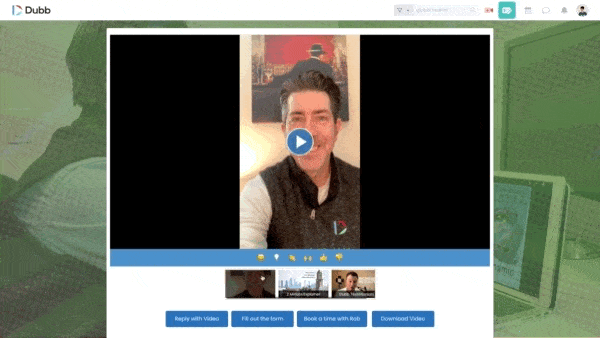
Just think about this: instead of needing to decide on a subject line and type out a lengthy email, your audience members can simply start talking. It’s a time-saving strategy that applies to both you and your viewer. Further, less gets lost in translation. While you (or a lead) could take one line of text in several different ways, it is much harder to do so when listening to someone say the same line of text on video.
There are so many reasons why you’ll want to send direct video messages to your leads and clients. If you haven’t tried it, I’m sure that you’ll see the value. Give it a shot today!
Capture Video Testimonials From Clients
From direct messaging, I now want to talk about capturing video testimonials.
You may be wondering: why are video testimonials so powerful?
Video testimonials are effective because they provide a personal and emotional connection with potential customers. When people watch a video testimonial, they can see and hear the experiences of real customers, which can help build trust and credibility for your real estate business. Specifically:
- They provide social proof: Video testimonials are a form of social proof, which is the idea that people are influenced by the actions and opinions of others. When people see that other customers have had positive experiences with a business, it can increase their own confidence in the business and make them more likely to make a purchase.
- They are more engaging than written testimonials: Simply put, video testimonials are more engaging and entertaining than written testimonials. People are more likely to watch a video than read a written testimonial, and video testimonials can also convey emotions and facial expressions, which can make them more impactful.
- They are more trustworthy: Video testimonials are more trustworthy than other forms of marketing because they feature real customers. Potential customers can see and hear the sincerity in the testimonials, which, once again, can help build trust in your real estate business.
- They can provide a personal connection: Video testimonials provide a personal connection between your real estate firm and potential clients. Those leads can see the faces and hear the voices of real customers, which can make them feel more connected to the business and its products or services. It makes it more likely that they will want to follow those customers’ leads and become a new client of yours.
- They are easy to share: Video testimonials can be easily shared on social media, email, and other platforms, which can help spread the word about the business and its products or services. Sharing video testimonials can also help to increase brand awareness and attract new customers.
- They can be customized: Video testimonials can be customized to meet the specific needs of your business. As we will discuss below, your real estate firm can choose to highlight certain services or properties. You can even focus on certain customer experiences. What this does is help tailor the testimonials to the target audience and make them more impactful.
Considering the above, you will definitely want to invest in video testimonials. Like creating introductory videos, there is an upfront time cost in gathering these videos. However, when you have them, they can do a significant amount of sales work for you.
How to Get Video Testimonials
With this in mind, let’s talk about how you can gather these types of customer testimonials.
There are essentially two ways to do so. You can record these testimonials in-person or you can have your customer record it through a video.
While in-person recording can work if you are in the same location, chances are that you and the customer are in different places. Because of this, it’s probably more convenient for you to have your customer record a video testimonial on their own time.
So how can you do this?
You may want to invest in a digital tool that lets your customers easily reply to your messages with video. Like I mentioned above, what they can do is click on a “reply with video” button, speak about their fantastic experience with you and your real estate firm, and send that video back to you. This is an extremely seamless way to gather a high-quality testimonial with minimal time requirements for both you and the customer.
In the end, what you should do is make testimonial gathering part of your sales process. Once you have helped a satisfied client buy or sell a property, take some time to ask them for a video testimonial. You can say something like, “It would mean so much to me if you can spend a minute or two recording a video testimonial about your experience with me.” If your client is satisfied, there is a good chance that they are going to say yes.
Really, the rewards come from being proactive. Even though it may feel awkward, I highly encourage you to take a few seconds and actually request that video testimonial. Whether you record it in person or use software to record that testimonial asynchronously, take some time to ask for this piece of content.
Sharing Your Video Testimonials
So what happens when you actually get your video testimonial?
This is the exciting part. Essentially, you have an extremely powerful asset that you can use in so many different ways. Some of the many ways that you can use your video testimonial include:
- Directly sending it to another lead: This is the most straightforward application. If you are trying to convince a lead to become your client, you can forward them a link to the customer testimonial. Ideally, you will want some sort of connection here. For instance, the testimonial should speak to problems or issues that the lead wants to be solved. Even if it is a testimonial from a customer in the same city, town, or state, this type of connection will make the testimonial resonate even more with the lead.
- Adding it to another video: This may require a little more editing from your end, but you can include a customer testimonial video in another type of video. For instance, you can add a testimonial to your introductory video. You may even create a video describing updates in your local market and then conclude by including a video testimonial. The choice is yours.
- Posting it to a compilation page: If you have more than one video testimonial, consider creating a video testimonial compilation page. Essentially, this can be a hub where prospects and leads can see how your clients have obtained immense value from your real estate firm. When a new lead hears about you and your firm, you can direct them to this page so that they can hear the satisfied stories from your prior clients.
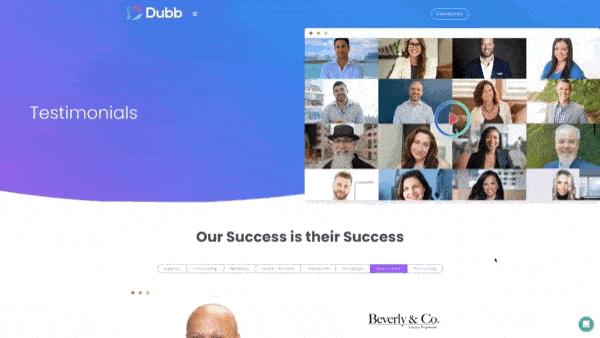
- Posting your testimonials to social media: Social media is a fantastic tool for any real estate agent that is looking to grow their business. Just like directly sending your testimonial to a prospect, you can post your testimonial to your favorite social media platforms, thereby building trust with your followers and audience members.
- Adding the video to a playlist: Finally, this is a great way to add an extremely personable touch when communicating with a prospect. What you can do is create a hyper-personalized video for that prospect and then add your testimonial video as part of a playlist. Your testimonial will play after the first hyper-personalized video ends. It’s a great way to include your customer testimonial video and immediately show how your real estate firm created value in one (or more) of your clients’ lives.
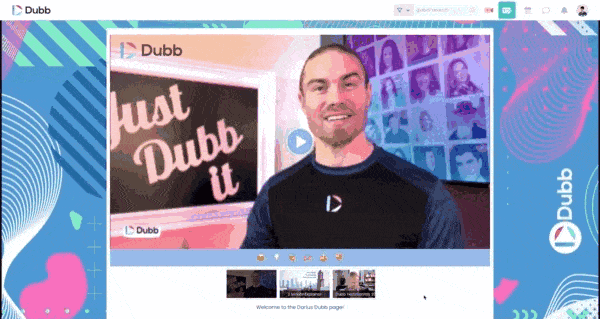
You can share your video testimonials however you’d like. In the end, however, this post is about making your life easier and helping you save time. Don’t feel obligated to share every single video testimonial on every single social media platform that you’re on.
Wherever you choose to share your customer testimonials, however, you will find that they will help you save a significant amount of time. They speed up the trust-building process and, yet again, can do this while you are sleeping. That way, when you get on the phone with that prospect, you will be in an already-great position to build and strengthen the relationship.
Create Videos Highlighting Your Properties
In your day-to-day life as a real estate agent, you are likely spending a good amount of time showing off properties.
The simple reality is that many of these tours are not going to lead to sales. That time you are spending giving tours of your properties, however, can’t be taken back. It is gone forever.
Or think about it this way: let’s say that one of your clients wants to see a specific property at 6:00 pm. While you would normally be fine with this, that potential appointment would conflict with another item on your schedule—your child’s musical performance.
This is where some of the stress comes into play. On one hand, you have to grow your business. The real estate industry is extremely competitive. On the other hand, you have obligations in your personal life that you cannot ignore.
So what can you do in this scenario? How can you maximize your effort and save time? As you can guess, the magic comes from taking videos of your properties.
The value proposition, once again, is clear. If you can take videos of your properties, you can easily share those videos with your prospects and leads. If a new lead is interested in one of your properties and reaches out to your firm, you can easily send them your video of the property. Alternatively, you can post all of your property videos to your website or social channels. Then, any member of your audience can click on the property that interests them, watch your video, and then reach out for more information.
Creating Your Property Videos
With these benefits in mind, you may be wondering how you can best create videos of all of the properties in your portfolio.
Once again, practice makes perfect here. It may take you some time to create the type of property video that you envision. Just keep at it and you will see significant improvement.
Wherever you are on the production scale, however, I encourage you to think about the following things.
- Spend some time on planning and preparation: Before you start filming, it’s important to plan and prepare for the shoot. Think about what your audience would want to see and make sure that the property is in good condition. Doing this prep work will actually save you time in the long run, so don’t forget this step.
- Keep the equipment simple: In all likelihood, your smartphone is going to be good enough for these types of videos. If you already have a separate camera, tripod, and external lighting, you can also use these tools. That being said, make sure
- Think about creating an outline: You don’t need to create a full-fledged script. However, think of creating a brief outline that contains all of the points you want to make. This can include the key features and selling points of the property. Clearly, this helps ensure that your video is structured and focused.
- Be comprehensive when filming: When filming, take your time and capture the property from various angles. Be sure to include shots of the exterior, interior, and each room. You’ll also want to pay attention to the lighting, ensuring that the property is well-lit and that the shots are not too dark or too bright. Don’t feel the pressure to get everything right on the first take. What you can do is record in clips and combine them together during the editing process.
- Consider adding a voiceover and/or music: A voiceover can help to bring the property to life, making it feel more personal and engaging for potential buyers. It also gives you the opportunity for the audience to hear your voice and understand your knowledge of the property. Music can also be added to the video to create a mood and set the tone. While you don’t want the music to be overly distracting, it can be a nice touch to your property videos.
Play Your Videos in Zoom Calls
Simply put, Zoom calls have become a staple in our professional lives. Whether you were one of the first Zoom users or opened an account during the global pandemic, you are probably using Zoom in one form or another.
Most often, we are using Zoom to communicate with our coworkers and colleagues. It’s when we get on hours-long (or longer) Zoom calls that causes us to feel the dreaded “Zoom fatigue.”
I’m not saying you need to stop with your internal Zoom calls. What I am saying is that you can use Zoom to communicate with your prospects and clients.
The most natural application here is getting on an introductory Zoom call with a prospect. On that Zoom call, you will probably introduce yourself and speak about the services that you can provide. You’ll also hear about the prospect’s wants and needs. Specifically, this will likely involve properties that the prospect is interested in (if they are a buyer).
All of this is well and good. What happens after, however, is where technology can play a really big role. In the past, what you may have done is have a great conversation with the prospect and determine the next steps. One of those steps may have been meeting with that prospect in person so that you could show them one (or several) properties.
Granted, meeting that prospect in person is a good way to build rapport. There is little better than meeting a potential customer in person, so you are setting yourself up for success by doing this. However, that meeting comes with several risks—namely, that the prospect isn’t truly interested in the properties that you are showing.
Sure, you may be strengthening the relationship with that prospect. However, it comes at a cost—your valuable time. You want to use the tools and capabilities that you have right now so that you can both not waste time and get closer to a sale.
There are also other costs that come with meeting with clients in person. For one thing, it can be expensive to travel to your properties and to meet with your clients. It sucks up a lot of time and can prevent you from ticking off important items on your to-do list.
A Solution: Videos in Your Video
So what can you do?
One great solution is to play a video within your Zoom meeting. This is easier than you might think.
Let’s say that you recorded a video about a specific property in your portfolio. You followed the tips and advice above to record a video that will really resonate with your audience. This video represents an asset that you can use on your website, social channels, and virtually any other place that you’d like.
That being said, you aren’t creating a video for the sake of creating a video. You want to use that video to generate a sale. Because of this, you will want to somehow include call to action buttons below your video. As you likely know, calls to action are tools that can essentially lead your audience from point A to point B. They can do everything from helping you build a stronger relationship with a lead to converting that interested lead into a paying client.
In this case study, you choose to use a tool like Dubb and include a call to action button below your video. Specifically, you opt for a button that lets your viewer book a time on your calendar. That meeting can be everything from a phone call to a Zoom meeting (for the sake of discussion here, we are going to assume a Zoom meeting).

Once you get on that Zoom meeting, you can chat with your prospect as you would at any other in-person meeting.
However, this is where you can save significant amounts of time. What you want to do here is share your screen and play a video that you have already created.
The magic comes from Dubb’s Zoom app (you can find it in the Zoom Marketplace by clicking here). Using the Dubb app, you can search through your video library, find a video that could be relevant to your lead, and then play that video within Zoom.
To be clear, this video can be virtually anything. It can be a tour of one of your properties. It can also be a testimonial from one of your most satisfied clients. It can even be one of your more polished videos that explains who you are and what value you can provide to the lead.
Whatever the case may be, playing a video within your Zoom meeting can be a major asset. It can help you save time because you don’t need to explain or repeat yourself in your meetings. Instead, you can say something like, “Here is a quick look at one of my properties” or “Here are how some of my former clients felt after working with me.” While the video plays, you can take a break, collect yourself, and determine how you can further strengthen the relationship.
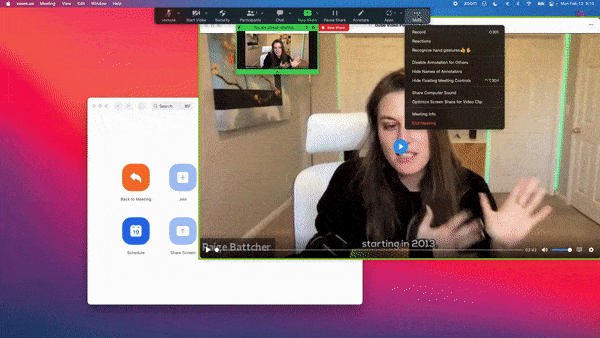
Also, recognize that the video is taking your place and advocating for you. This is especially true when you are playing customer testimonials. Even if you (or a colleague) created the video, the fact that you are playing it alongside your face gives you another asset that you can leverage.
So if you have a video that you’d like to play in your Zoom meetings, go ahead and download the Dubb app for Zoom. You can then capitalize on this strategy when speaking with any type of lead or client.
Banking Valuable Hours
As real estate agents, it’s easy to focus on the number of leads we have or the number of properties that we sold this year. We spend less time focusing on the number of hours we are spending on the job. Unfortunately, this lack of focus can make us unproductive. Not only that, but that unproductive time spent can lead to lost sales and a general sense of frustration.
It doesn’t have to be this way. Using the tips and strategies above, you can use technology to take back your time. You can both free up your calendar and get that much closer to more sales.
So where to take it from here? Go ahead and create a quick video for a prospect. Ask them to reply with video and try to capture a video testimonial. As you are waiting, create a video of one of your properties and post it to one of your social channels.
These are small steps, but together, they make a big difference.
I wish you the best of luck!
About Dubb
Dubb is a communications platform that can help you leverage video in your day-to-day life as a real estate agent. From helping you find new prospects, easily scheduling calls on your calendar, and converting those leads into paying clients, Dubb is designed for real estate agents like you. To learn more about how Dubb can help you reach your sales and marketing goals, visit dubb.com.


